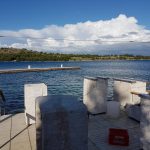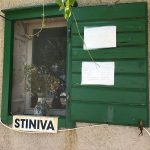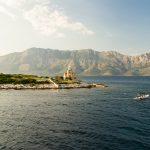Continuing our coverage of the latest Gastronaut tour, a look at one of the highlights of the entire trip: the gorgeous Kornati islands
At some point in life the world’s beauty becomes enough. You don’t need to photograph, paint or even remember it. It is enough.
The quote above, penned by Toni Morrison, often keeps humming quietly at the back of my mind when I travel. In this day and age, taking a trip anywhere in the world, be it a walk around your neighbourhood or a two-week holiday overseas, usually implies having a camera in your hand every single step of the way. The urge to capture at least a snippet of the world’s beauty and later show it to your friends (or followers – what a time to be alive) is ingrained in our brains at this point. I often fall victim to it myself, finding a certain sight too magnetic to resist pointing my phone in its direction. Where does this urge come from? One could say the civilisation is doomed to rot away in a pit of self-obsession: post your seductive destination photos on Facebook or Instagram, proceed to bask in the warm glow of likes and hearts flying your way. Create an illusion you’re living an adventurous life, carefully curate your digital footprint, entice a sense of envy even among your closest friends. However, being an eternal optimist, I prefer to look at it from a different perspective: what is this urge, if not a humane drive to share that beauty with other people who might not have an opportunity to witness it otherwise? Maybe they haven’t found out about certain gorgeous places tucked away in various corners of the world, or they might have been there at one point in time and your photos will remind them of some cherished memories. Where’s the downside?
Here it is: people often fail to be present in the moment when they keep staring at all that beauty through a lens, instead of feasting their eyes on the real thing. The urge is overwhelming, you keep snapping away, and even with the impressive camera roll you’re left with, you later find it hard to remember certain details from the trip. You’ve missed the crucial part of the experience.
Never has Morisson’s quote resonated more with me than on our Gastronaut tour of Murter island and the surrounding area. On November 8, after a rewarding visit to the Betina Museum of Wooden Shipbuilding, we were supposed to head to the Kornati islands, a stunning archipelago proclaimed a National Park in 1980. Having never been to the Kornati before, I was excited beyond words – a trip to one of the most breathtaking destinations in Croatia, out of season, meaning we’d probably have the entire place to ourselves, without countless other boats passing by or blocking the view.
All that excitement literally dampened while we were boarding the ship, as the occasional light drizzle of that morning rapidly progressed to turn into incessant, merciless rain. We were meant to enter the Kornati area from the south and sail our way to its northernmost border – a 3-hour journey at the least, and it was increasingly looking like we would spend it gazing at a single sight:
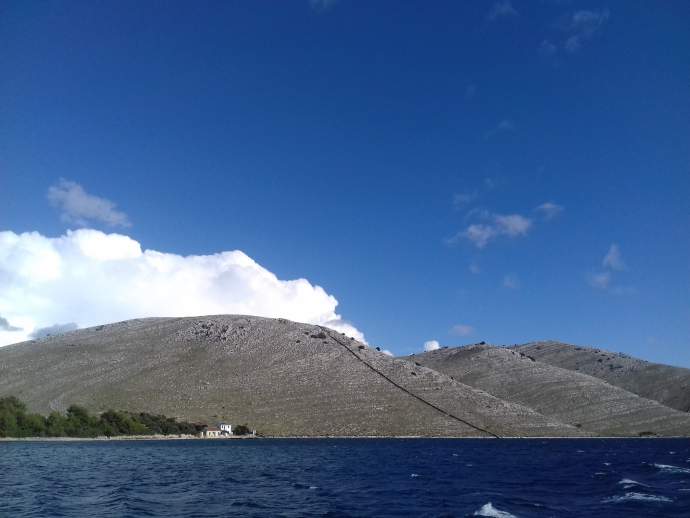
Not the best way to experience the Croatian coast. We were reasonably disheartened, but as the best memories can be created even in the most dire of circumstances, we weren’t about to allow some unfortunate weather conditions to ruin our adventure. We chatted, got to know each other; bottles of wine were passed around, we shared ideas and experiences, we laughed. Simple joys of sailing.
And then, something happened that can be described as nothing short of a miracle. The rain stopped. Never in my life have I seen the sky clear up so quickly; not even fifteen minutes into our trip, the heavy dark clouds were gone, the sun was beaming, and all those specks of rain on the windows dried up.
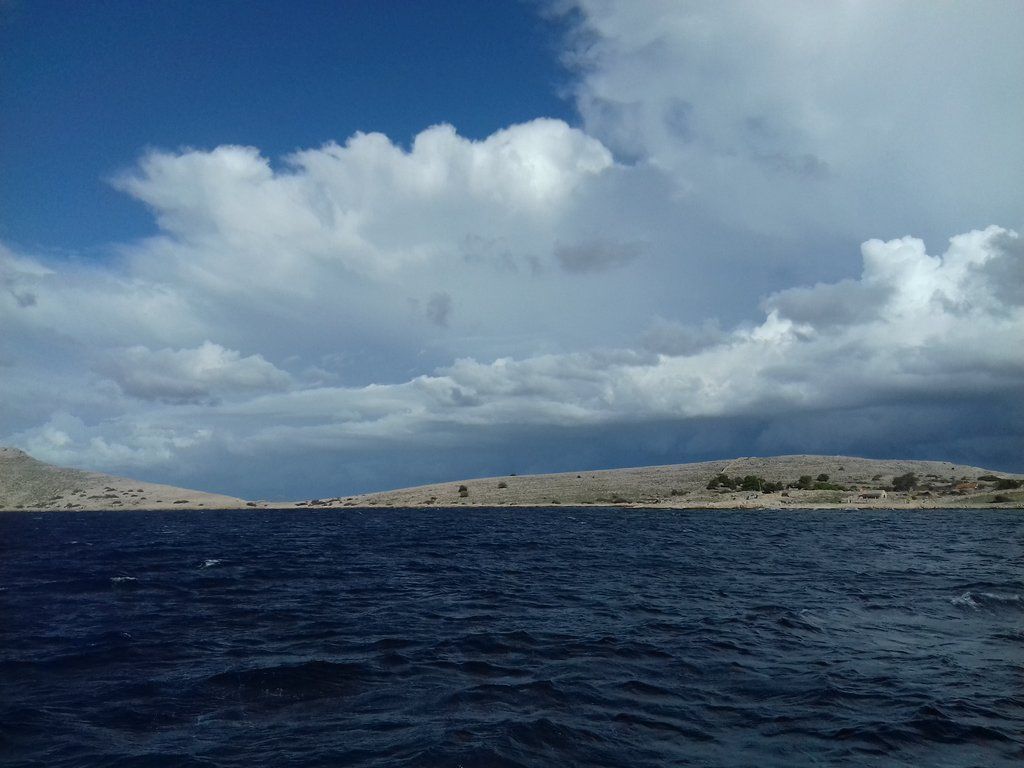
We were stunned. The majestic archipelago, rooted in some unfathomable ancient magic, decided it should be experienced in all its glory. So we hurried to the open deck, taking in the overwhelming sight laid out before our eyes: stripe upon stripe of incredibly intense hues of blue, sprayed with seafoam or dotted with puffy white clouds. Not a boat in sight – just us, the wind, and the silent giants we were passing by. A miracle.
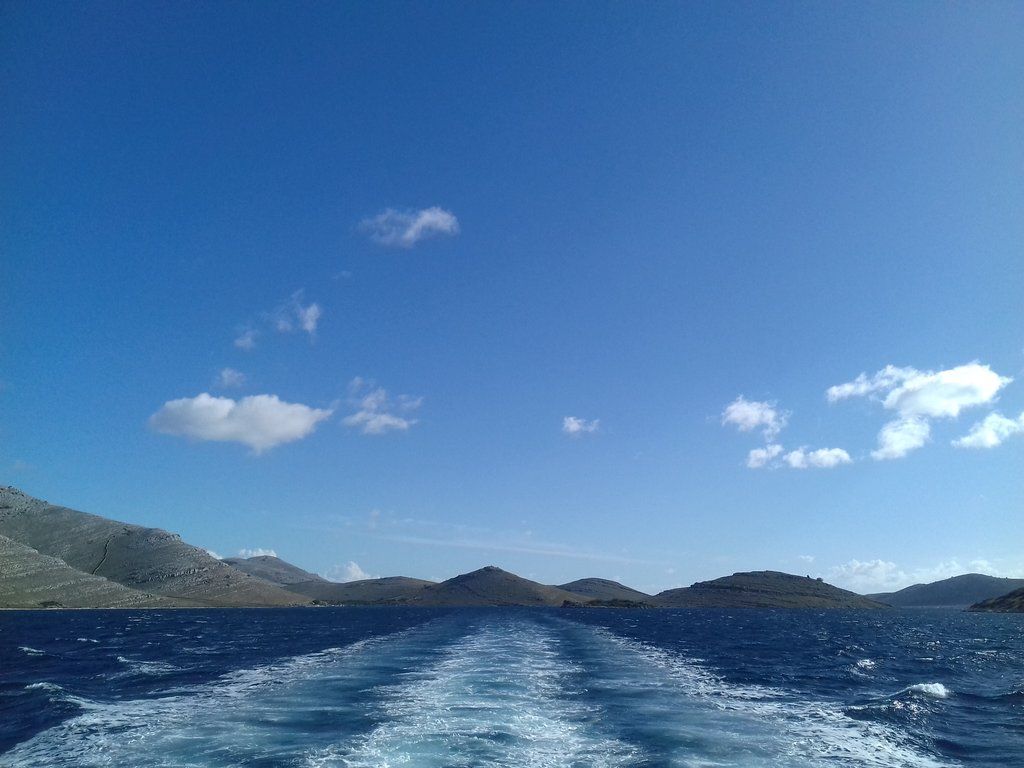
Now tell me, which human being in their right mind could resist snapping at least a couple of photos when presented with such mesmerising scenery? On my part, I caved in quickly – no travel writer out there could rise up to the challenge of conveying the beauty of the Kornati without following up with a photo or two. Some have tried, however, precisely capturing the essence of this gem in a few simple words: On the last day of Creation God desired to crown His work, and thus created the Kornati islands out of tears, stars and breath, wrote George Bernard Shaw upon his visit.

The archipelago consists of roughly 150 islands, islets and reefs, 89 of those located within the borders of the National Park. All of them are uninhabited and not equipped with any kind of infrastructure, save for a handful of restaurants or houses built by landowners who live on the mainland.
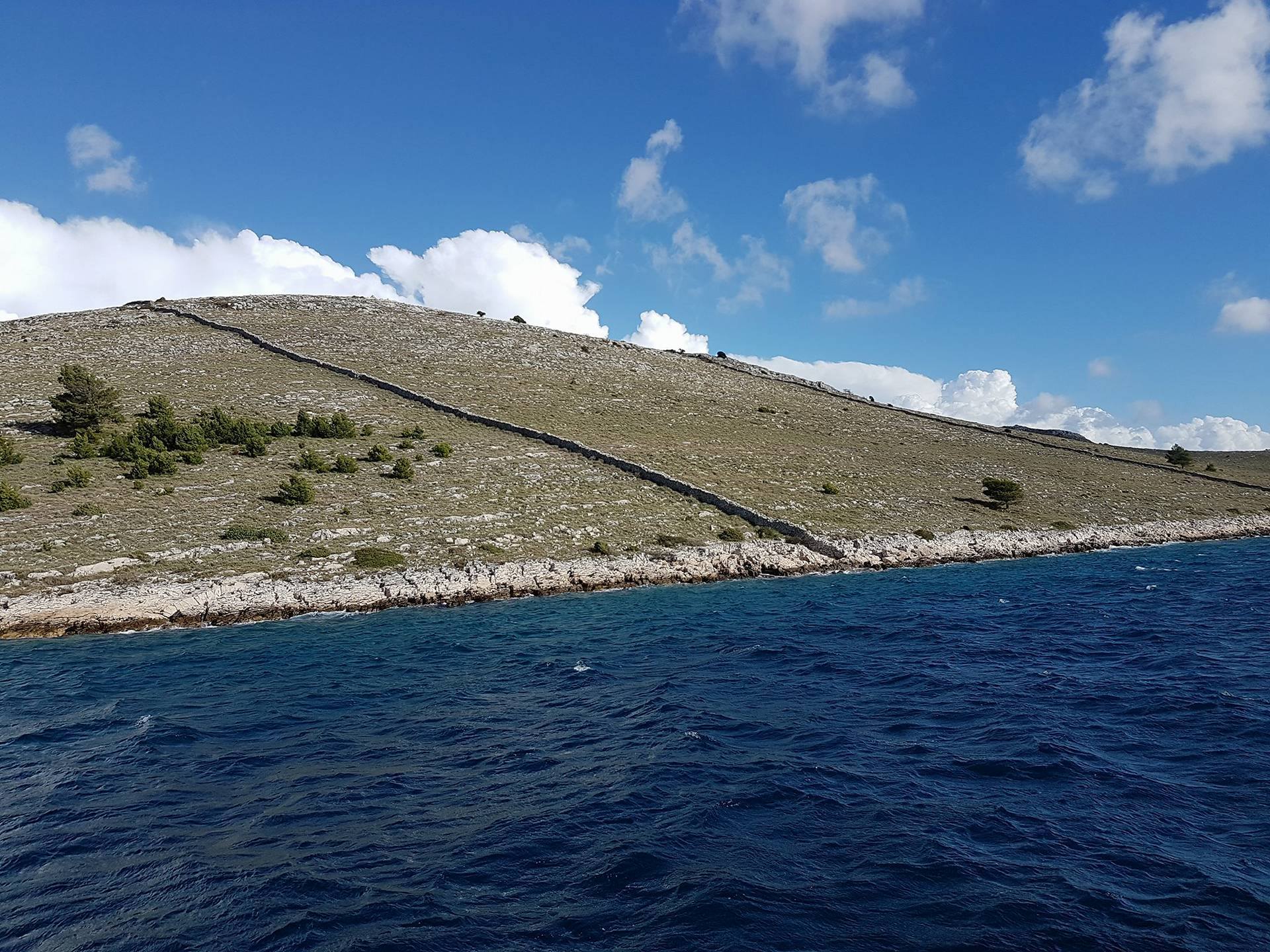
Even though the NP is managed by the state, the entire area is privately owned: from the 13th century onwards, the archipelago used to belong to the nobility from Zadar, later getting taken over by the population of Murter and Dugi otok islands. Residents of Betina on Murter, most of them farmers, acquired the majority of land parcels where they tended to crops, whereas the population of Sali town on Dugi otok remains known for their long tradition of fishing. Countless generations left their mark in the incredible history of the Kornati, and you wouldn’t be able to find a single person living on the neighbouring islands who doesn’t come from a long line of experienced men of the sea, be it fishermen, farmers, or shipbuilders.
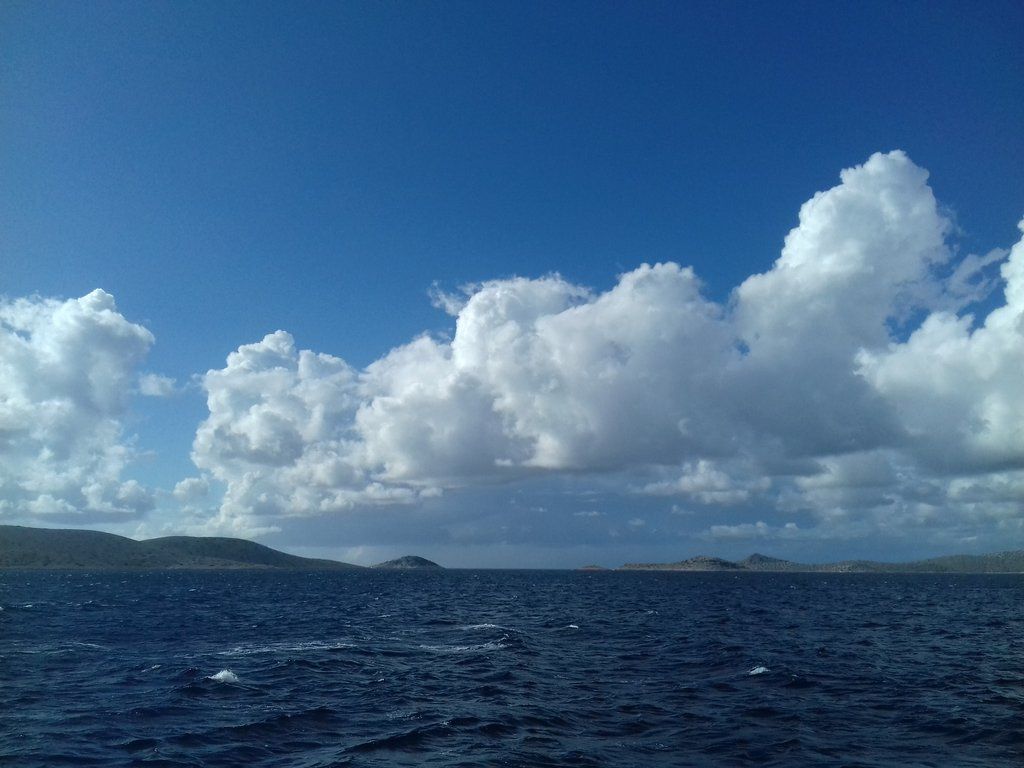
As the park’s website rightfully states, the Kornati are a nautical paradise – an immense area to explore with a wide array of available activities. To be quite honest, you could just sail around for days and end up with a rewarding experience, but there’s plenty more to do: admire the flora and fauna, with more than 650 plant species and 180 species of animals recorded so far, not to mention the 850 species of marine life who use the Kornati as their habitat. You can explore the cultural and historical heritage which dates back to the neolithic period; moor at any island of your choice and hike your way to the top. You’ll have the archipelago on the palm of your hand.
The problem is, most travellers are a couple of drinks in when they arrive, says the experienced sailor standing next to me. Suddenly, hiking doesn’t seem like a good plan anymore. I chuckle, remarking I can see why mastering the archipelago without a decent knowledge of either geography of navigation could seem like a daunting task. We produce a map and pinpoint our location, and just like that, things click into place: the anonymous patches of land now have faces and names, and we greet each one as we’re gliding along. I put my phone back in my pocket and run my fingers over the giant map. I feel the sun pinching my cheeks, wind ruffling my hair. I’m immersed in the moment, drunk on a rudimentary sense of joy, one that no camera lens in the whole wide world would be able to convey. A single piece of advice for anyone lucky enough to visit this spectacular wonder of nature: give in.
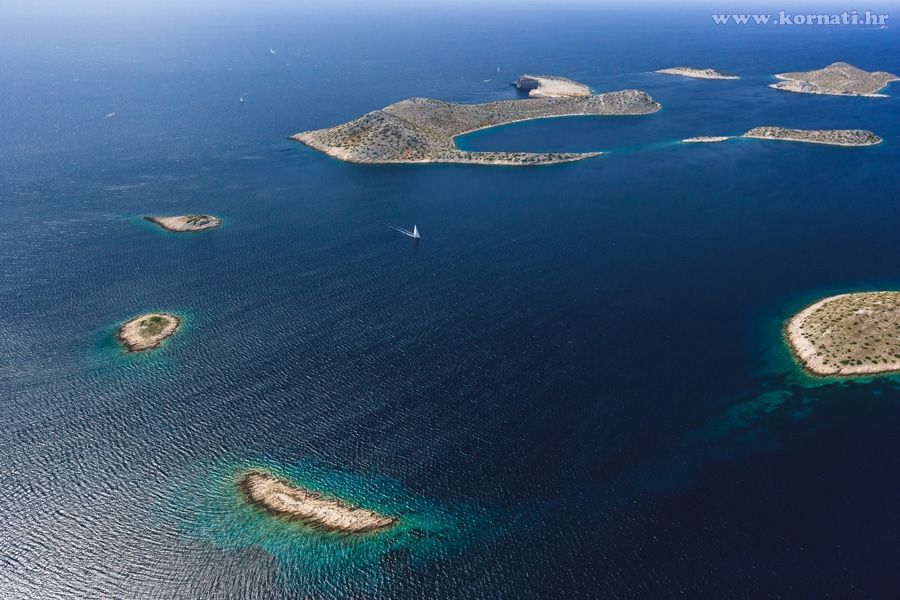
To learn more about the National Park Kornati, visit their official website.
Thanks to Vlado Šestan of the Travel Advisor for this lovely video recap of our trip.


